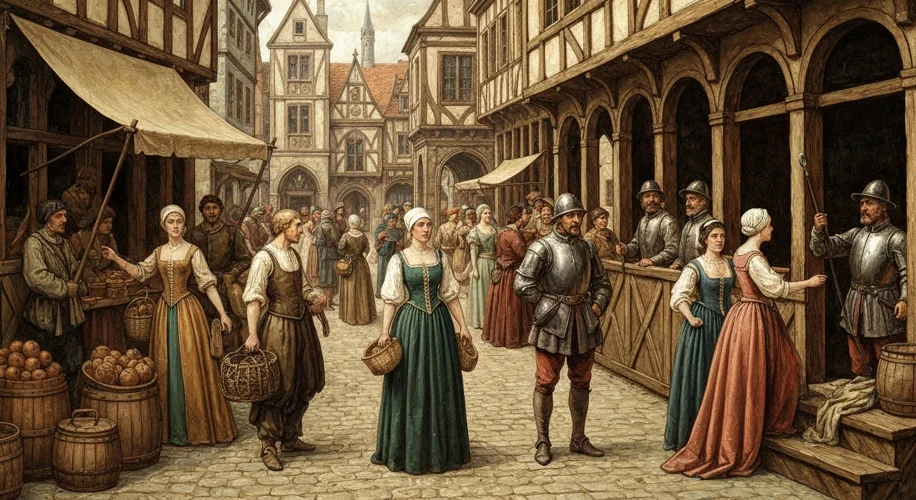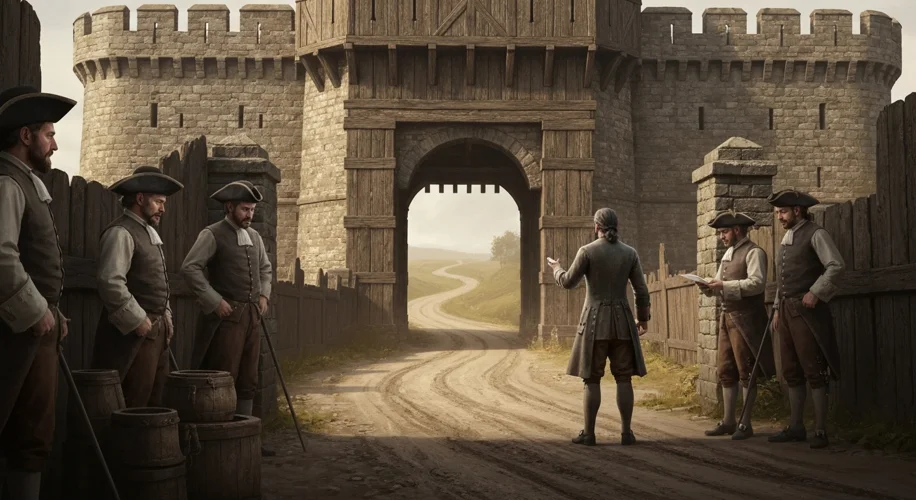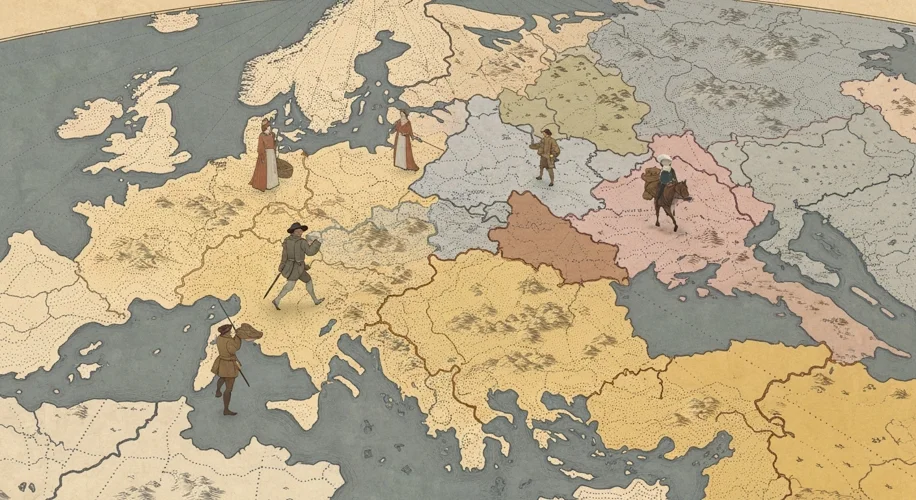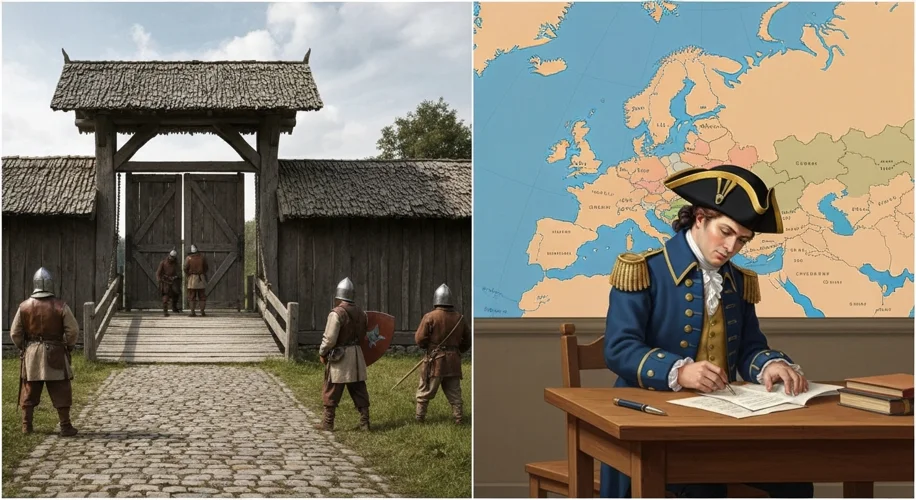Imagine a world where crossing a border wasn’t just a matter of showing a piece of paper, but a complex negotiation with local lords, customs officials, and the ever-watchful eye of burgeoning states. This was the reality for travelers in early modern Europe, a period stretching from the late Middle Ages through the 18th century. Far from the seamless movement we often associate with modern Europe, journeying across the continent was a testament to the evolving nature of state power and the constant tension between the desire for control and the practicalities of a connected world.
In the medieval period, much of Europe was a patchwork of feudal territories, duchies, counties, and free cities. Loyalty was often to a local lord rather than a distant monarch. While this meant a multitude of small checkpoints and varied tolls, the nature of these “borders” was often less about exclusive national identity and more about asserting feudal rights and extracting revenue. A merchant traveling from Bruges to Cologne, for instance, might pass through several different jurisdictions, each with its own rules and demands. A nobleman on a pilgrimage might find his status afforded him passage, while a commoner would face more scrutiny and greater demands for payment.

The seeds of change were sown with the rise of more centralized monarchies. As kings and princes consolidated power, they began to assert greater control over their territories. This process, often referred to as the “state-building” era, profoundly impacted border crossings. Monarchs sought to define their domains more clearly, not just for administrative efficiency but also to levy taxes, raise armies, and project their authority. The development of customs duties became a significant source of state revenue, transforming border points from mere markers of territory into economic barriers.
The 17th and 18th centuries witnessed a significant acceleration of this trend. The Thirty Years’ War (1618-1648) and subsequent conflicts underscored the importance of clearly defined borders and the need to control who and what entered a territory. This era saw the gradual introduction of more standardized procedures, including the precursor to modern passports. While not always the universally required documents we know today, letters of passage, safe conducts, and certificates of identity became increasingly common, especially for those traveling for official business, diplomacy, or seeking passage through potentially hostile territories.
Consider the experience of a foreign diplomat or a scholar seeking entry into a major university city like Paris or Leiden. They would likely need introductions, letters of recommendation, and perhaps even a formal permit from the relevant authorities. For merchants, the demands were often even more stringent. They faced not only customs duties on their goods but also regulations concerning the origin and destination of their merchandise, all aimed at protecting domestic industries and maximizing state income. The “freedom” of movement was, therefore, heavily contingent on one’s social standing, purpose of travel, and the specific political climate of the time.
However, it’s crucial to avoid anachronism. The concept of a “nation-state” with impermeable borders and a singular national identity was still in its nascent stages. Many “borders” were permeable, especially in regions with shared languages, cultures, or economic ties. Smuggling was rife, and local populations often maintained informal networks that facilitated movement across political divides. Furthermore, the sheer difficulty of travel – poor roads, slow transportation, and the ever-present risks of bandits or disease – acted as a natural deterrent to mass migration.

The Enlightenment period brought with it new ideas about liberty and the free movement of peoples. Thinkers like Adam Smith advocated for freer trade, implicitly questioning the utility of rigid border controls. Yet, the practical realities of state power and the competing interests of monarchs and ministers meant that the trend towards greater regulation generally continued. The French Revolution, while espousing universalist ideals, also led to periods of intense border control as the revolutionary government sought to protect itself from internal and external enemies.
Ultimately, the early modern period was a dynamic era of transition for border crossings. It was a time when the medieval legacy of localized control began to yield to the demands of increasingly centralized states. For the ordinary person, travel could be an adventure, a necessity, or a daunting ordeal, dictated by the whims of local lords, the decrees of distant monarchs, and the ever-present economic imperatives of customs and tolls. The “freedom” of movement was a privilege, earned through status, payment, or sometimes, simply by the sheer luck of navigating a complex and often unpredictable system.


